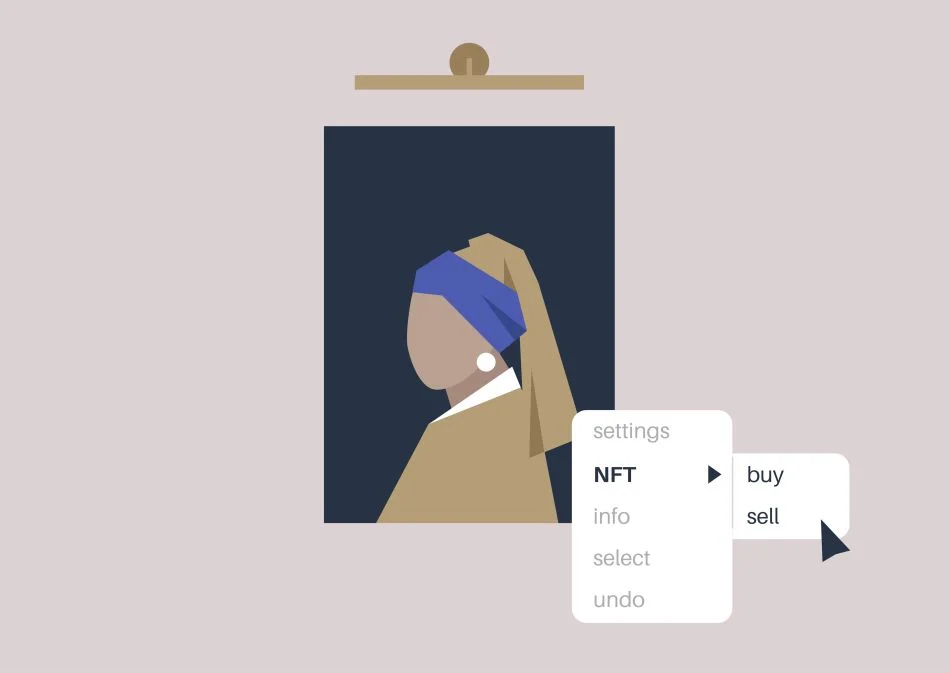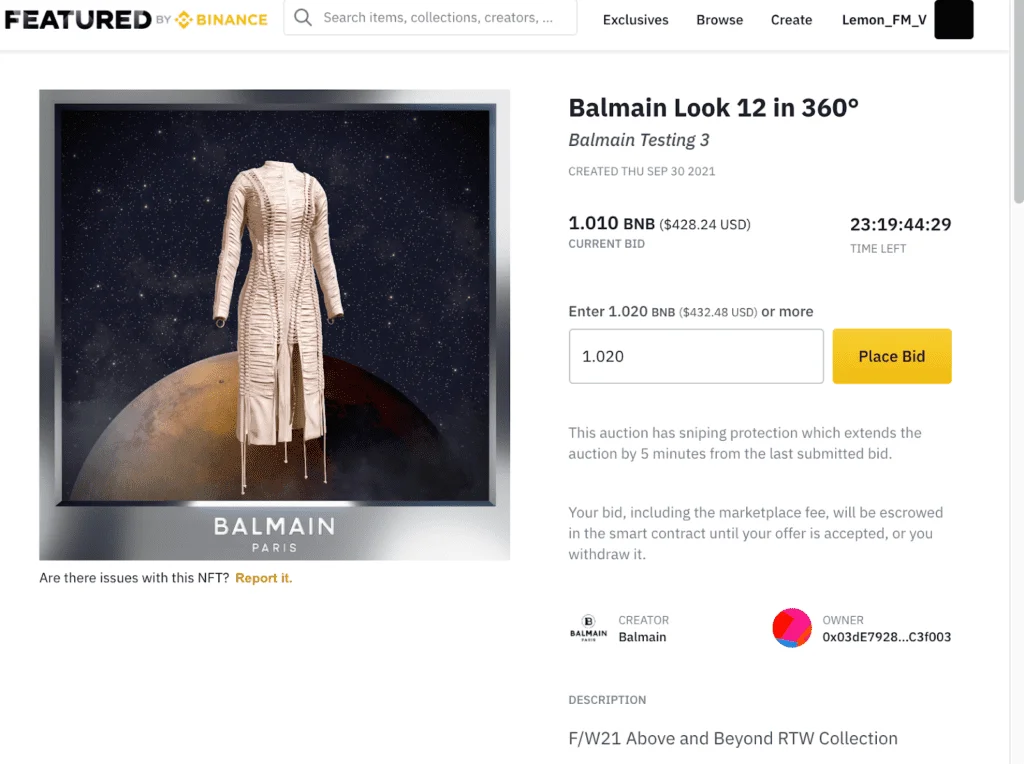There is no doubt that NFTs and digital art are here to stay. We see different processes and terms regarding the NFT art world, extending the ongoing debate regarding digital art.
One great example is the NFT auction process. It’s becoming more common for online marketplaces to feature new tools so artists and investors can start NFT auctions for their art pieces.
Although the auction looks like a simple process, there are several different types and ways of doing them. Knowing their differences will allow you to create an NFT auction that fits what you are looking for.
This will not only help you to get the art pieces you want but also make you avoid losing money and crypto coins by participating in the wrong type of auction. This article will show you the basics of NFT auctions and the types you can find.
This article is part of a broader guide describing the steps to selling NFTs.
What Is an NFT

If you still don’t know what an NFT is, don’t worry. We got you covered.
Non-fungible token (or NFT) is a unique digital asset stored in the blockchain. The non-fungible part means it can’t be replaced by anything else.
This is the main difference between them and other crypto tokens, like Bitcoin. Since they are unique, so is their value. They can be worth from a couple to millions of dollars. It is up to the creator or seller to decide.
Although many people think NFTs can only be illustrations or paintings, their uses go far beyond that. The possibilities are almost endless, and they can go from pictures to ID cards and tickets for an event.
What Is an NFT Auction

It is essential to understand that there are no differences between regular auctions and an NFT auction. Both auctions work the same way but with different types of sales and currency used.
NFT auctions are a process where the seller, whether the NFT artist or the one with the ownership rights, lists one or more works for sale to interested buyers. This way, these potential buyers can place their bids.
When the auction ends, the digital file is sold to the person with the highest bid. It is important to remember that for a bid to be concluded, the highest bidder must provide a value superior to the starting price of the NFT. Otherwise, the bid won’t count.
Types of NFT Auctions

As previously mentioned, there are several different types of NFT auctions in the NFT world. Each one has its own characteristics and operating style.
It is crucial to understand these differences before joining an NFT marketplace auction. Doing this guarantees you know the entire process and how the NFT auction system works.
Here are the most common types of NFT auctions in NFT marketplaces and how they work. Be sure to analyze the particular characteristics of each one.
Timed Auction
This is the most common type of auction you will find in an NFT marketplace. As the name suggests, the timed auction is based on a specific sale period for interested people to bid.
In the end, the final sale price will be determined by the amount offered by the highest bidder. The timed auction is straightforward and used worldwide.
Don’t forget the bid has to be valid. The amount must be higher than the minimum price chosen by the NFT owner. This rule applies to almost any kind of NFT auction.
Dutch Auction
This NFT auction model works differently from the previous one. In the Dutch model, the minimum price is actually the last one, and the opening bid starts with the highest bidder.
The high starting price will decrease, and the NFT will be sold as soon as the first person bids.
Since these NFT auctions start with a fixed price that is usually superior to the ones considered good deals for the asset, you probably won’t have to worry about the minimum bid. Although, in this auction style, if there is no existing bid before the offer gets below the minimum price, it won’t be sold.
No-Reserve Auction
In this NFT auction, there is no reserve price for the pieces. This means that the seller is willing to receive any amount for them.
Unlike the other types, there is no fixed price for the minimum bid. The asset will be sold to the highest bidder no matter how low the price gets.
It is one of the best deals for beginners and enthusiasts purchasing NFTs in auctions for the first time. They will also send the buyers digital certificates, just like in any other kind of NFT auction.
How to Participate in NFT Auctions

Now that you know how the NFT auctions work and the particularities of each type, it is time to learn how to participate in them. The process will be the same whether it is an auction with no reserve price or a dutch auction.
Be sure to follow each step carefully to avoid problems with both your wallet and account. Here are the main steps for participating in an online auction for NFTs:
Choose the NFT and Marketplace
Before bidding on an asset, the first step is choosing the NFT auction site and the piece you want to auction for. Many websites allow this process, and the auction work is the same for almost everyone.
Some of the most famous auction sites are:
Connect Your Crypto Wallet to the Website
After choosing the platform and the NFT you want to place your bid on, it is time to connect your wallet. Every marketplace has a tab dedicated to this connection where you can connect and set it up.
It is essential that you choose a trustworthy platform to place your bids and connect your wallet. You’ll avoid problems with the wallet and prevent scams and losing your crypto coins.
Analyze the Information About the Digital Asset
The next step after setting everything up is to analyze important information regarding your target NFT. All these details can impact a decision, from the reserve price to the current bid.
These details are also responsible for telling if the investment is worth the asset. Especially when it comes to a fixed-price listing, it is important to analyze these details before placing a bid.
Place Your Bid
Now it is time to place your bid on the auction site effectively. If your account and wallet are correctly set up, the process should happen just fine.
Choose the amount you want to bid for the NFT. After that, you just need to confirm.
Don’t forget that your bid needs to be higher than the previous one. If your bid is the first one, pay attention to the reserve price and guarantee that your bid is higher than that value to count.
Collect Your NFT
In the last step of the bidding process, you will collect your NFT. This obviously will only happen if you win the auction and get to be the highest bidder.
If this is not the case, you can place a higher bid if the auction is timed before the time runs out. Otherwise, you will have to find a new project to place your bid on and try to win. In case you win the audition and your bid is accepted, you will be able to access your NFT through your wallet.
Conclusion on NFT Auctions

NFT auctions are undeniably a great way to acquire NFTs for both beginners and professional investors. Many platforms are available to find the perfect digital asset for your collection.
Don’t forget to analyze all important data of an NFT and bidding process. Details like reserve price and highest bidder are crucial for making the correct decisions. Moreover, you must carefully set up your marketplace account and wallet to guarantee that there won’t be any problems during or after the auction.
Now that you know everything about how the NFT auction work, it is time to start looking for the next NFT of your collection. Don’t forget to use trustworthy platforms for the process. With this, you will definitely achieve success as an investor in the NFT world.